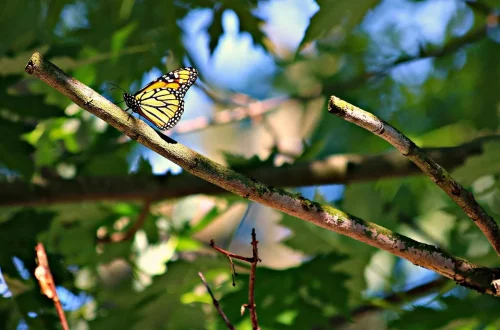
Effective Ways to Get Rid of Bees Outside Safely and Naturally
Bees are essential pollinators, playing a crucial role in the ecosystem and the food supply chain. While they are beneficial, their presence can sometimes lead to fear and discomfort, especially when they invade our outdoor spaces. Many people experience anxiety at the thought of bees buzzing nearby, particularly if they have had previous encounters that ended in painful stings. The instinctive response is often to eliminate the bees, but that can lead to unintended consequences, not just for the bees themselves but also for the surrounding environment.
Understanding the importance of bees in our ecosystem is the first step toward finding humane and natural ways to remove them from our vicinity. Rather than resorting to harmful chemicals or extermination, many individuals are now seeking safer alternatives that allow them to coexist with these vital creatures while still enjoying their outdoor spaces. Natural methods not only ensure the safety of bees but also protect other beneficial insects and the overall health of the environment. Let’s explore some effective strategies for managing bee populations around your home in a way that is both safe and considerate.
Natural Repellents to Keep Bees Away
One of the most effective ways to deter bees from your outdoor space is through the use of natural repellents. Many common household items can serve as effective deterrents without harming the bees. For instance, peppermint oil is known for its strong scent that bees find unappealing. Mixing a few drops of peppermint oil with water in a spray bottle can create an effective repellent. Spray this solution around areas where bees tend to gather, such as patios or gardens, to discourage them from lingering.
Another effective natural repellent is vinegar. The strong odor of vinegar can repel bees and other pests. You can create a solution by mixing equal parts of vinegar and water and spraying it around your outdoor areas. This method not only helps in keeping bees at bay but also serves as a natural cleaning agent.
Cucumber peels are also known to be an effective deterrent due to their scent. Placing cucumber peels in areas where bees are frequent can help in keeping them away. Additionally, citrus peels are another natural option; the smell of citrus is something bees dislike. Leaving citrus peels around can provide a dual benefit of repelling bees and adding a pleasant aroma to your outdoor space.
It’s important to note that while these natural repellents can effectively discourage bees, they may not eliminate the problem entirely. Regular application is necessary, and it’s best to combine these methods with other strategies to ensure a bee-free environment.
Creating an Unattractive Environment for Bees
Another effective strategy for keeping bees at bay is to make your outdoor area less attractive to them. Bees are drawn to certain plants and food sources, so modifying your garden can significantly reduce their presence.
First and foremost, consider the types of flowers and plants you cultivate. Bees are particularly attracted to bright and fragrant flowers. By opting for plants that are less appealing to bees, such as those with less odor or muted colors, you can decrease the likelihood of bee visits. For example, while flowers like lavender and sunflowers attract bees, plants like basil and marigolds are less enticing.
Food sources are another critical factor. Bees are often attracted to open food containers, sugary drinks, and ripe fruits. If you’re having an outdoor gathering, ensure that food is covered and that no leftover scraps are left out. Promptly cleaning up spills and crumbs can help eliminate the food sources that attract bees.
Also, consider removing any bee-friendly habitats around your home. This can include clearing out old wood piles, debris, and any rotting vegetation, as these can serve as nesting sites. Keeping your yard tidy can discourage bees from making their home nearby.
Lastly, maintaining a clean outdoor space will help deter bees. Regularly emptying trash cans, sealing food containers, and cleaning up after meals can significantly reduce bee activity in your area.
Utilizing Traps for Safe Removal
If bees have already established a presence in your yard, using traps can be a humane way to manage their population. There are various DIY methods for creating bee traps that can capture bees without harming them. A simple yet effective trap can be made using a plastic bottle.
To create a bee trap, start by cutting the top off a plastic bottle and inverting it into the bottom part. This creates a funnel effect that allows bees to enter but makes it difficult for them to escape. Fill the bottom of the bottle with a mixture of sugar water and a few drops of dish soap. The sugar attracts the bees, while the soap traps them in the liquid.
Place these traps in areas where bees are frequently buzzing, ensuring they are away from high-traffic areas for safety. Check the traps regularly to release captured bees back into a more suitable environment, such as a nearby field or garden.
Another option is to purchase ready-made bee traps from garden centers or online retailers. These traps are designed specifically for capturing bees without causing harm. When set up properly, they can help in reducing bee populations in your area while allowing you to safely relocate them.
It’s essential to check local regulations regarding bee traps, as some areas have specific guidelines to protect native bee populations. Always consider the ecological impact of your actions and opt for methods that prioritize the welfare of these important pollinators.
When to Call in the Professionals
While many natural methods can be effective, there are situations where it may be necessary to consult with professionals. If you notice a significant bee infestation or a hive established in a high-traffic area, it may be best to seek help from a local beekeeper or pest control expert who specializes in humane removal.
Professional beekeepers can often relocate bee colonies safely, ensuring that both the bees and your family remain safe. They have the skills and equipment needed to handle bees effectively without causing harm. Many beekeepers are willing to help with the relocation process, as they can use the bees for their own hives, helping to support the dwindling bee populations.
It’s important not to attempt to remove a hive yourself, especially if you are allergic to bee stings or lack experience. A professional service can assess the situation and determine the best course of action while ensuring the safety of everyone involved.
Additionally, some municipalities have organizations that focus on bee conservation and can offer assistance. They may provide resources for dealing with bee issues while promoting awareness of the importance of these pollinators.
In conclusion, while bees can be a nuisance, there are effective and humane ways to manage their presence in your outdoor spaces. By utilizing natural repellents, creating unattractive environments, using traps, and knowing when to call in the professionals, you can ensure a safe and peaceful coexistence with these vital creatures.
*This article is not intended as medical advice. For health-related issues, always consult a qualified healthcare professional.*




